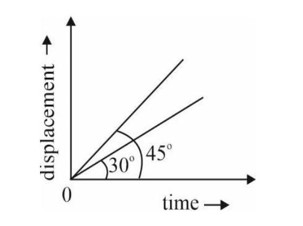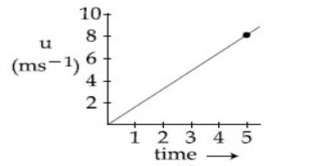Physics Motion in Straight Line
Get insights from 62 questions on Physics Motion in Straight Line, answered by students, alumni, and experts. You may also ask and answer any question you like about Physics Motion in Straight Line
Follow Ask QuestionQuestions
Discussions
Active Users
Followers
New answer posted
2 months agoContributor-Level 9
For constant acceleration, a,
x = ut + (1/2)at² ⇒ x-t graph is parabola.
v = u + at ⇒ v-t graph is straight line with positive slope.
New answer posted
2 months agoContributor-Level 10
t? + t? = t
v? /t? = α and v? /t? = β
t? = v? /α and t? = v? /β
v? /α + v? /β = t
v? (1/α + 1/β) = t
v? = (αβt) / (α + β)
Distance traveled = Area under speed-time graph
Distance = ½ * base * height = ½ * t * v?
Distance = ½ * t * (αβt) / (α + β) = (αβt²) / (2 (α + β)
New answer posted
2 months agoContributor-Level 10
V? = 36 km/hr = 10 m/s
V? = -72 km/hr = -20 m/s
V? = -1.8 km/hr = -0.5 m/s
V? = V? + V?
= V? + V? - V?
= -0.5 + 10 – (-20)
= -0.5 + 30 = 29.5 m/s
Taking an Exam? Selecting a College?
Get authentic answers from experts, students and alumni that you won't find anywhere else
Sign Up on ShikshaOn Shiksha, get access to
- 65k Colleges
- 1.2k Exams
- 679k Reviews
- 1800k Answers


